Roger W. Smith: A Master Of The Time
5 November 2020There was a time when the most precious, precise and beautiful watches did not come from Switzerland but from France and England. Especially the latter, at least since the end of the 17th century and throughout the 18th century, it was recognized as the home of the best portable watches in the world.
Modern English watchmakers such as George Daniels or Roger W. Smith have done nothing but continue and enhance this long tradition.
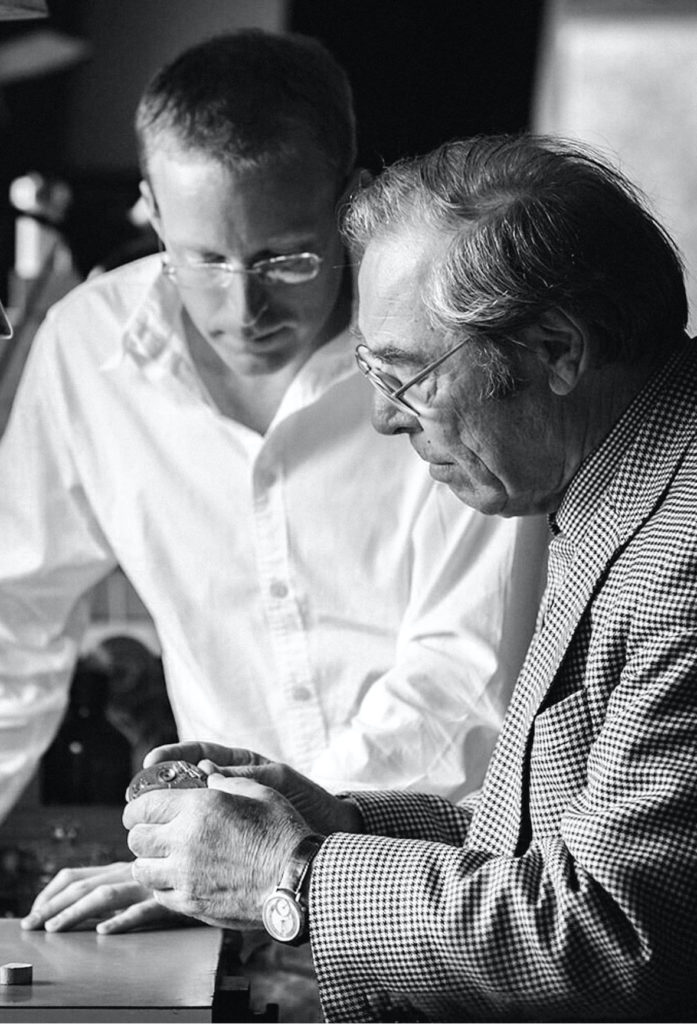
THE PRIMACY OF ENGLISH WATCHMAKING
This tradition has several historical reasons. London’s academic institutions and factories welcomed all talented people, regardless of their race, religion or social background.
This meant that in the 17th century, some of the best minds in Europe gathered in the English capital, fleeing the persecution, mainly religious, of their countries.
It was mainly France, the home of watchmaking, which suffered from it, which lost artisans such as Peter Debaufre, Simon De Charmes and Daniel de Saint-Lieu – who were welcomed in Britain without hesitation once their skills were made evident.
From British came some of the mechanical solutions still used today in the finest timepieces. George Graham created the first pocket watch with a cylinder escapement in 1725.

Before him Thomas Tompion introduced, in clocks, the first pendulum clock with equation of time, the complete calendar, the power adjustment and the one-year power reserve.
Thomas Mudge created the first anchor escapement in 1769, in addition to the winding mechanism directly on the spring barrel, called remontoir, while John Arnold was responsible for the cylindrical balance spring, then used in marine chronometers. Not to mention the co-axial escapement, conceived by George Daniels in 1974 and presented two years later.
A tradition that continued in the following centuries, when the best watch industry had moved to Switzerland, thanks also to the migration of artisans who brought with them technical skills and knowledge of new materials.
THE ISLE OF MAN, GEORGE DANIELS AND ROGER W. SMITH
In the 20th century, the British watchmaking tradition found new life in a patch of land in the Irish Sea, the Isle of Man. A British dependency that does not belong to the United Kingdom, the island is known for the Tourist Trophy motorcycle race and for a particular breed of cats without a tail, but it is also of key importance for those who love watches: John Harwood and George Daniels worked here in the last century and Roger W. Smith, one of the greatest contemporary independent watchmakers, still works today.
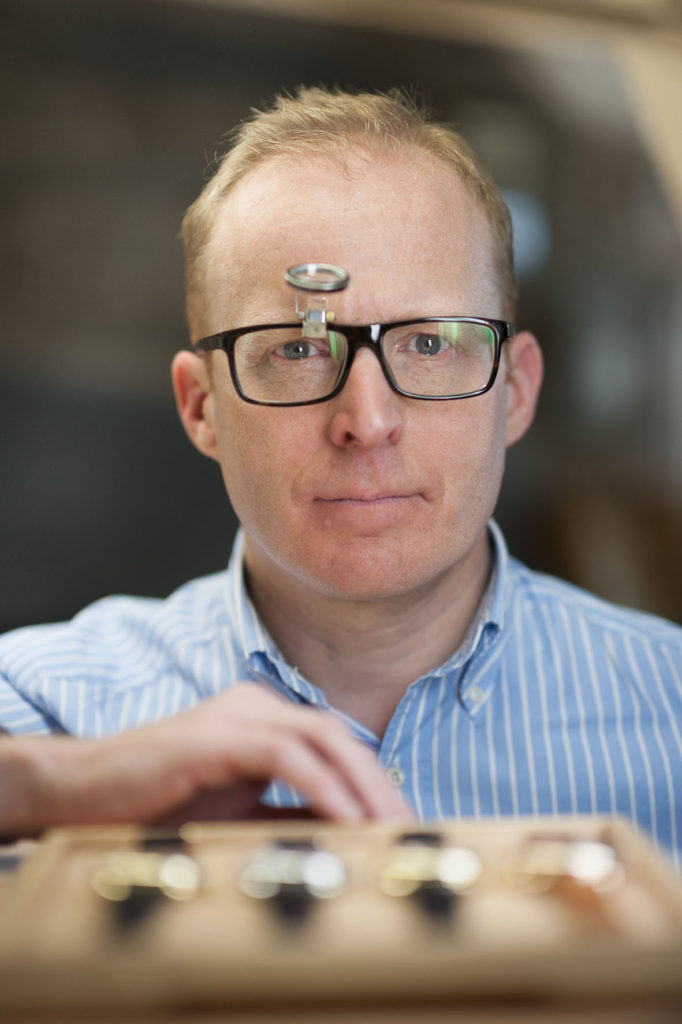
Smith grew up with Daniels as his leader, who summed up his creative philosophy as follows: “A watch should seem to have simply appeared from thin air, without any sign of the maker, other than the realisation of their aesthetic.”
APPEARING FROM THIN AIR
“This statement was very much aligned to George’s core principle that a hand-crafted mechanical watch should be of the highest technical standard, as opposed to being in any way a ‘quaint’ relic of arts and crafts – recalls Roger W. Smith. To hand create a watch and for it to look evidently hand made was, in his view (and mine!) a failure of craftsmanship. As it has been well documented, this was the main reason why George rejected my first effort at hand crafting a watch when I was 19 years old. The watch did work (just!), but it was clearly of an inferior finish to a machine-built watch. It looked hand-built.”
In fact, hand-making a watch with the meticulous, relentless, attention to detail that this demands should create a timepiece which looks superior to a machine-made watch. It should result in a watch that appears to have simply materialised out of thin air to realise the original vision of the maker. That is a true manifestation of the Daniels Method.”
ROGER W. SMITH: SERIES 1, 2 e 3
A simplicity that Roger W. Smith reflects naming his collections simply in a progressive way from Series 1 to Series 5 Open Dial, in addition to the exceptional The GREAT Britain and Daniels’ Anniversary.
Following the appearance of the GREAT Britain watch in November 2013, Roger W. Smith was inundated with requests to create a time-only wristwatch. His response was the new Series 1: a 38/40 mm cased, manually wound wristwatch displaying hours, minutes and seconds.
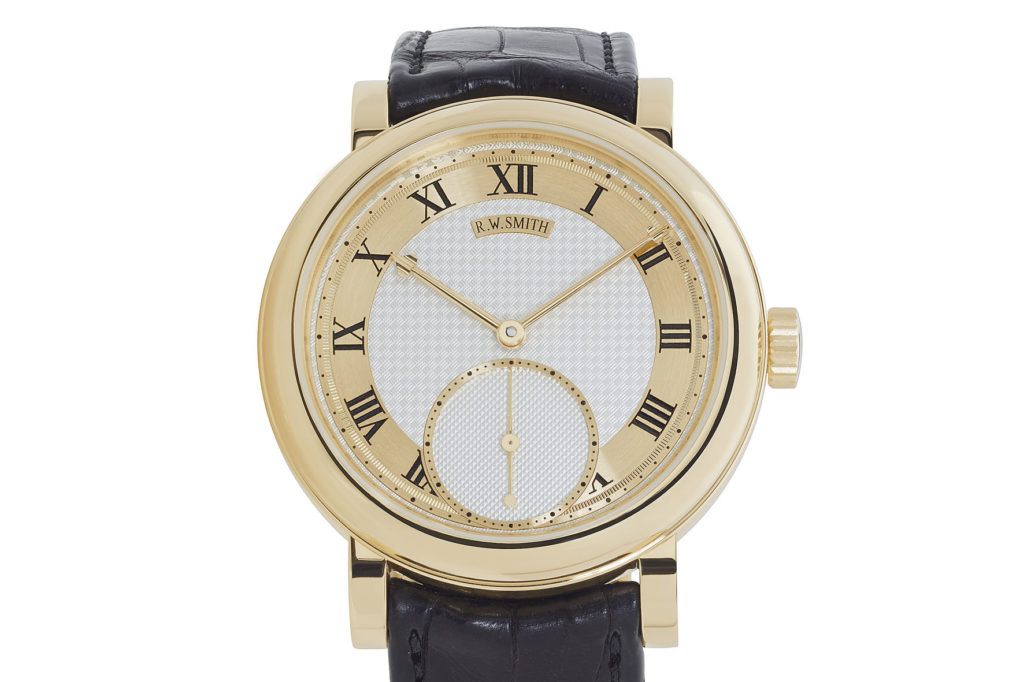
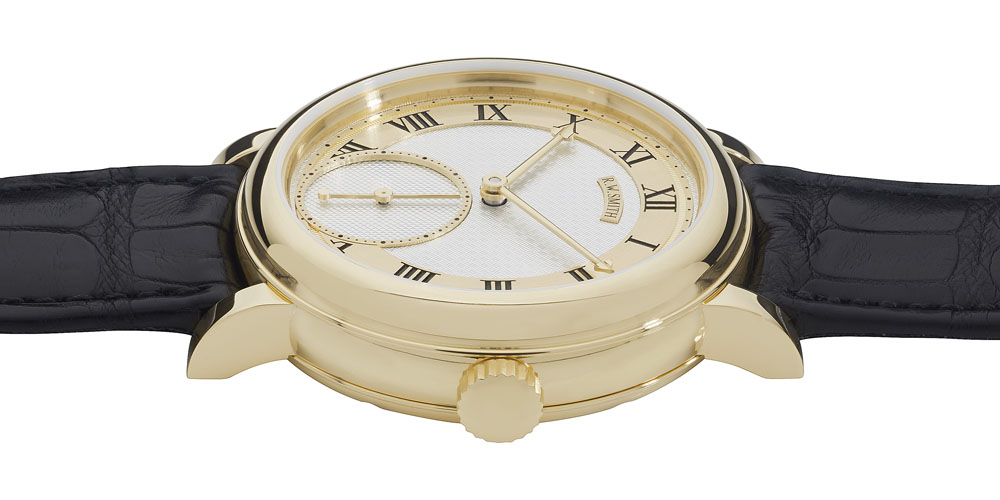

The Series 2 is an evolution of the model which has been perfected over the last ten years since its original release. It is a 38/40 mm cased, manually wound wristwatch displaying hours, minutes, seconds and power reserve dial.
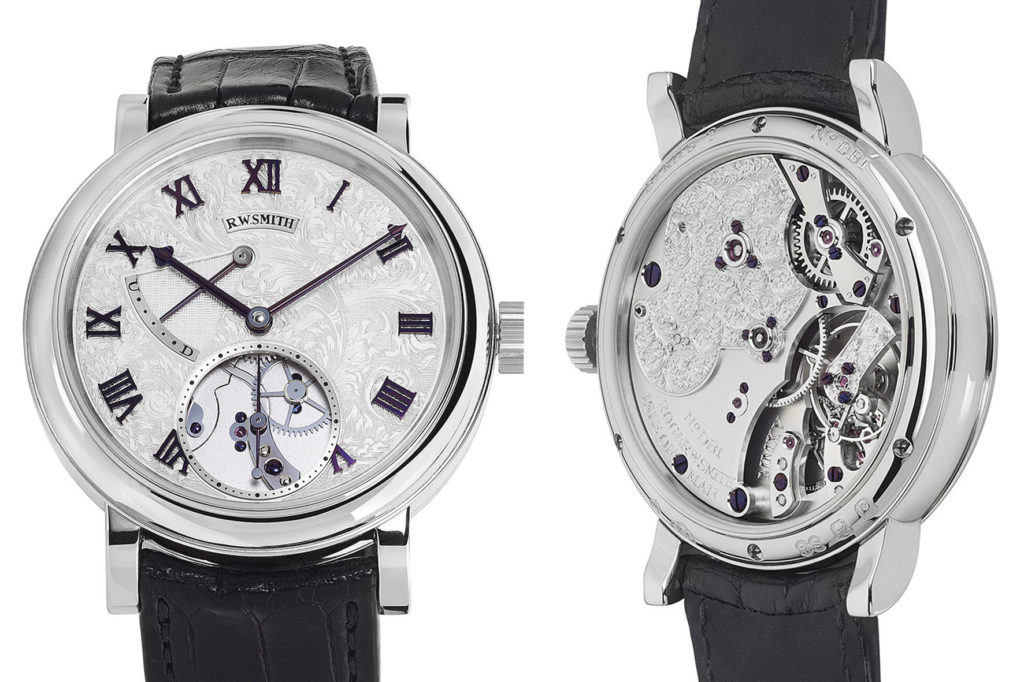
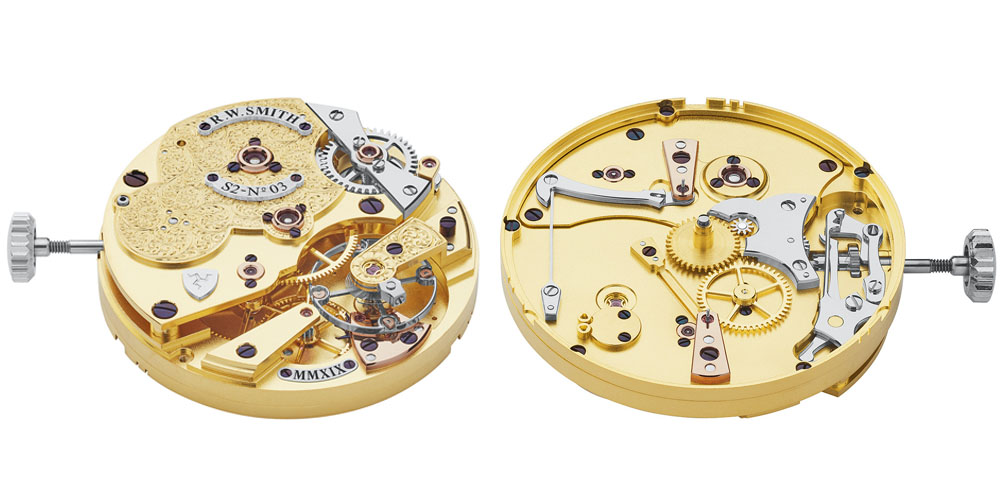

The original Series 1 featured a retrograde date complication as a result of this and a further two unique pieces that are evolutions of Roger’s original 2001 design, he decided to devise a new Series 3 watch around the development of this fascinating complication.
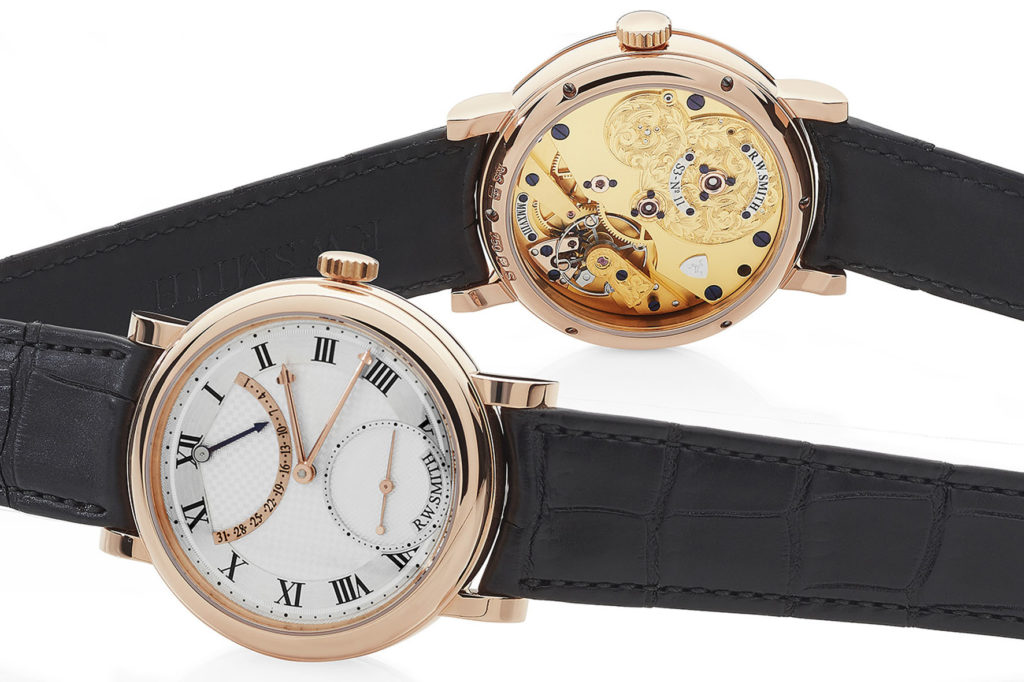
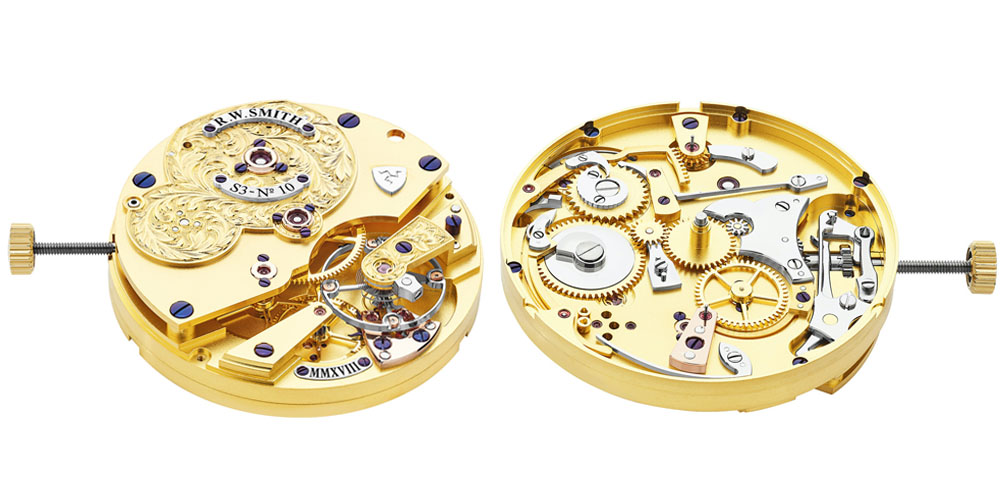
Three series which embody the impulse that drives Roger to design and create a watch: “Without sounding cliché it really is the pursuit of perfection, but understanding that perfection is illusive. Why? Because each time you make a watch, there will be some aspect of that build you learn from; some detail that you think ‘I can improve on that next time.’ However, the equally important impulse for me is to improve mechanical efficiency and performance. Every watch I build is a new frontier for me since I’m trying to push the boundaries of what’s possible for my watchmaking. Working with a world-leading technology such as the co-axial escapement, I have this wonderful opportunity to explore new potential for mechanical watch performance; not just timekeeping itself, but other practical benefits such as extended service intervals and longevity. Conversely, if you are working with traditional technologies such as the lever escapement, then I imagine the impulse is more about craft and creation of mechanical art.”
ROGER W. SMITH: SERIES 4 e 5
With Series 4, for Roger W. Smith comes the triple calendar, a complication that had always dissuaded him from facing it because it is often associated with difficult-to-read dials. The master solved the problem by enlarging the case, which houses a manual winding movement, to 41 mm; on the dial there are hours, minutes, seconds, triple calendar and moon phases.
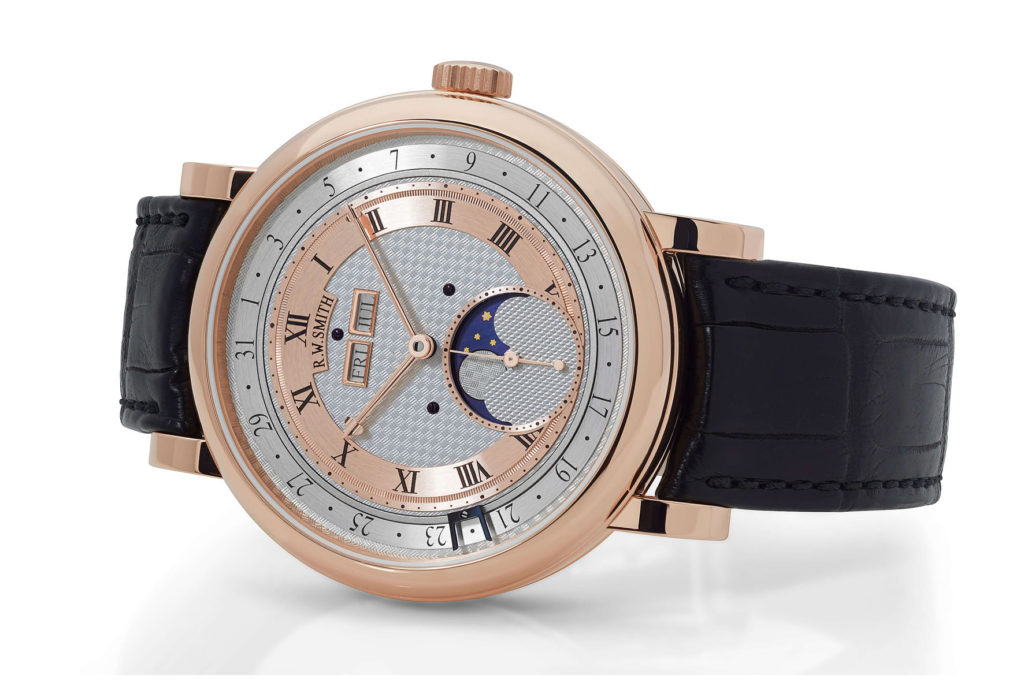
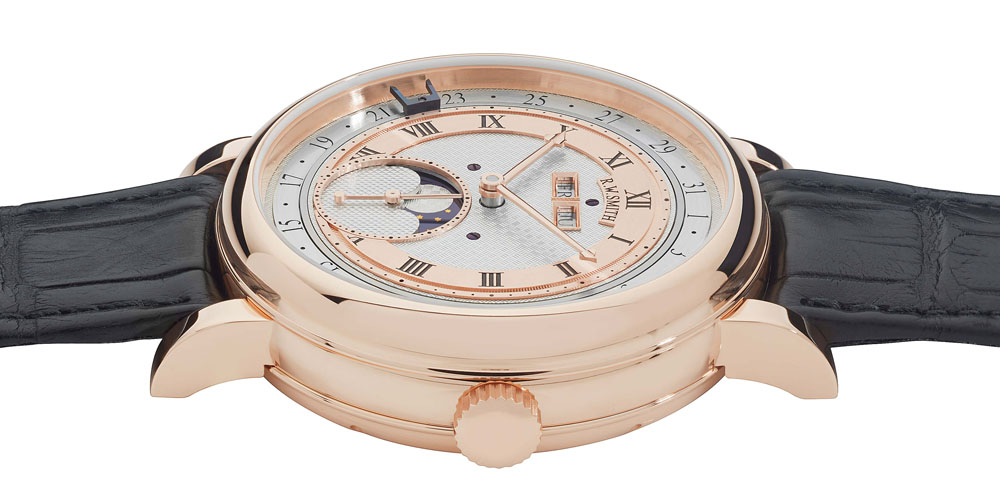
In the Series 5 Open Dial, the dial opens: “I had always wanted to reveal a stratum of the watch that is not normally seen by anyone apart from the watchmaker – the under-dial work, Roger W. Smith writes on his website. So, in 2008 I conceived the Series 5 Open Dial watch, finally completing the first one in 2010.”
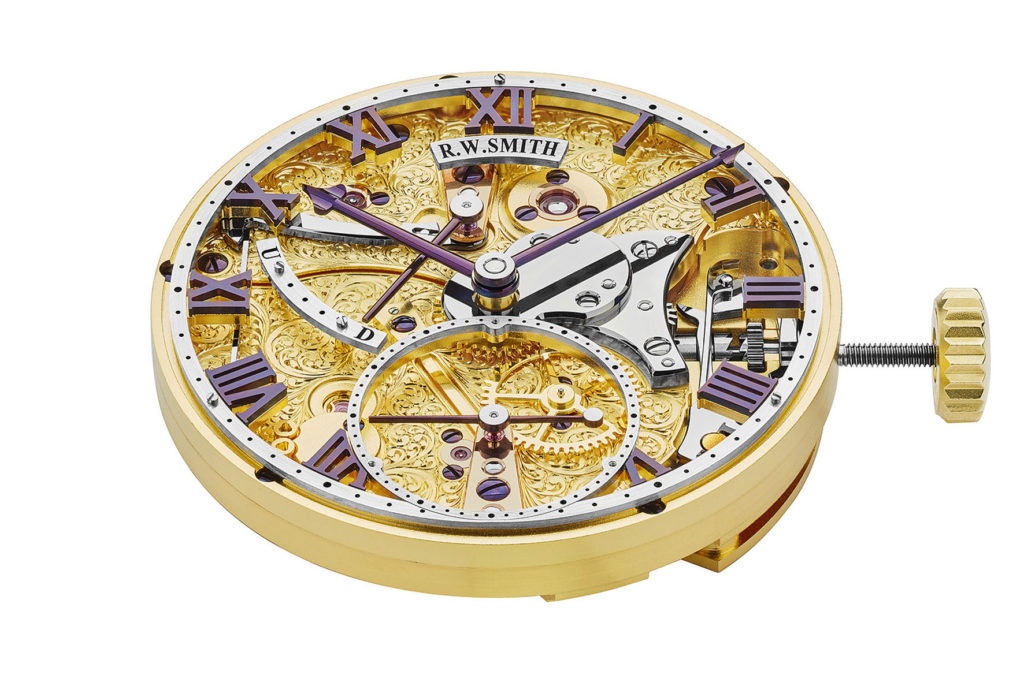
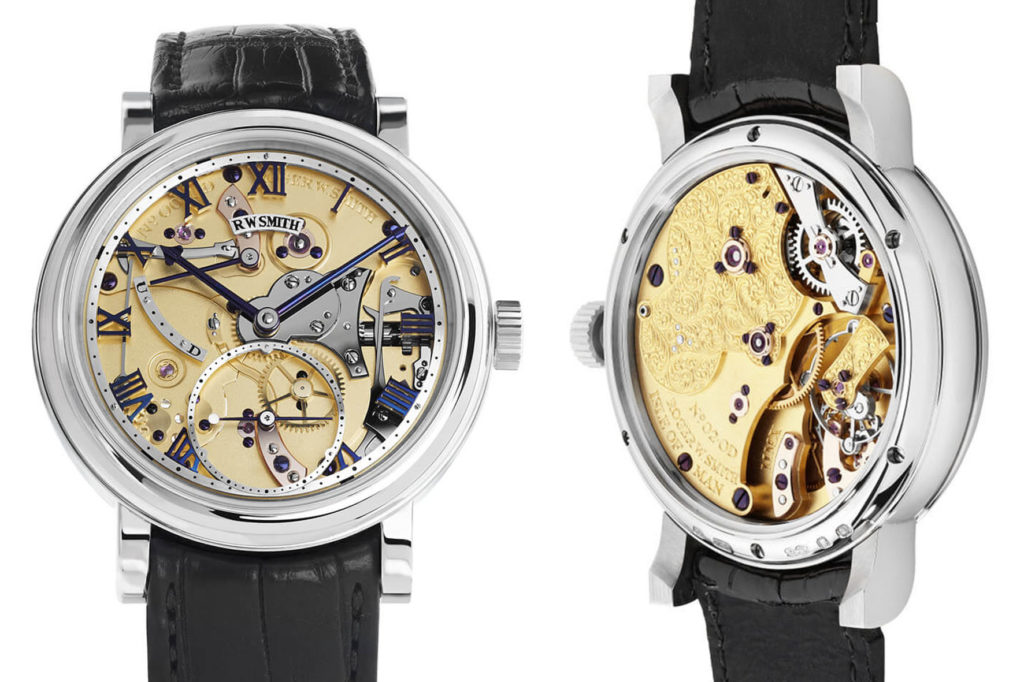
THE QUEST FOR PERFECTION
In 2013 Roger W. Smith was appointed an Ambassador of the GREAT Britain campaign, launched in 2012 for the London Olympics, to promote British excellence. The Master immediately understood that this could be an opportunity to increase knowledge of English watchmaking.
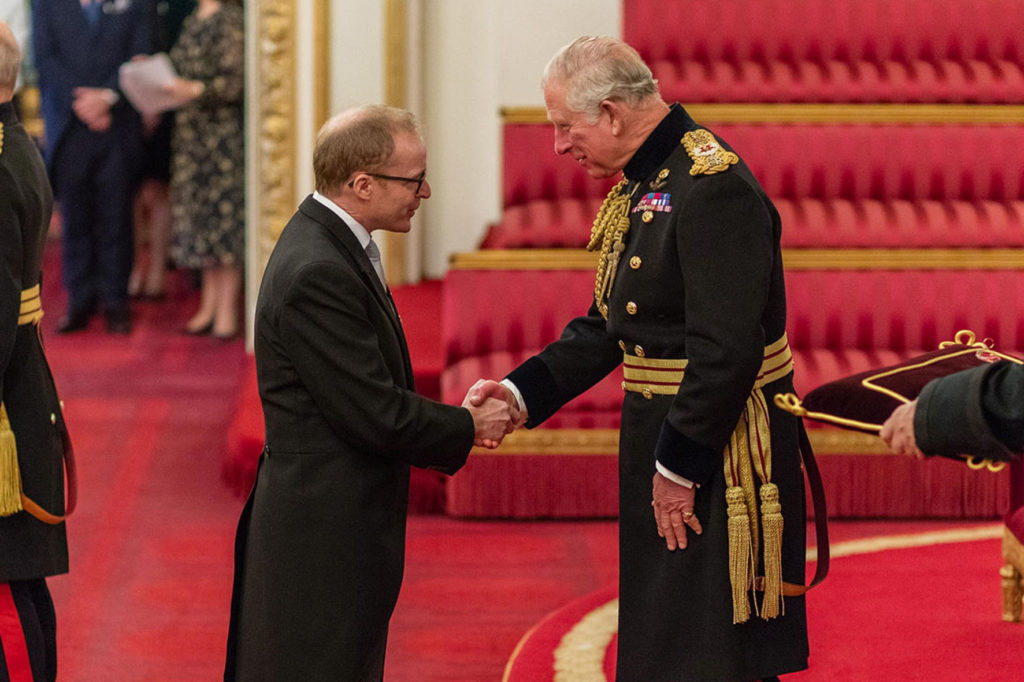
Thus The GREAT Britain was born, a unique piece to celebrate British innovation and technology around the world. Based on the Series 2 watch, it is best known for having perhaps the most complex dial ever made by hand and a movement which is one-of-a-kind.
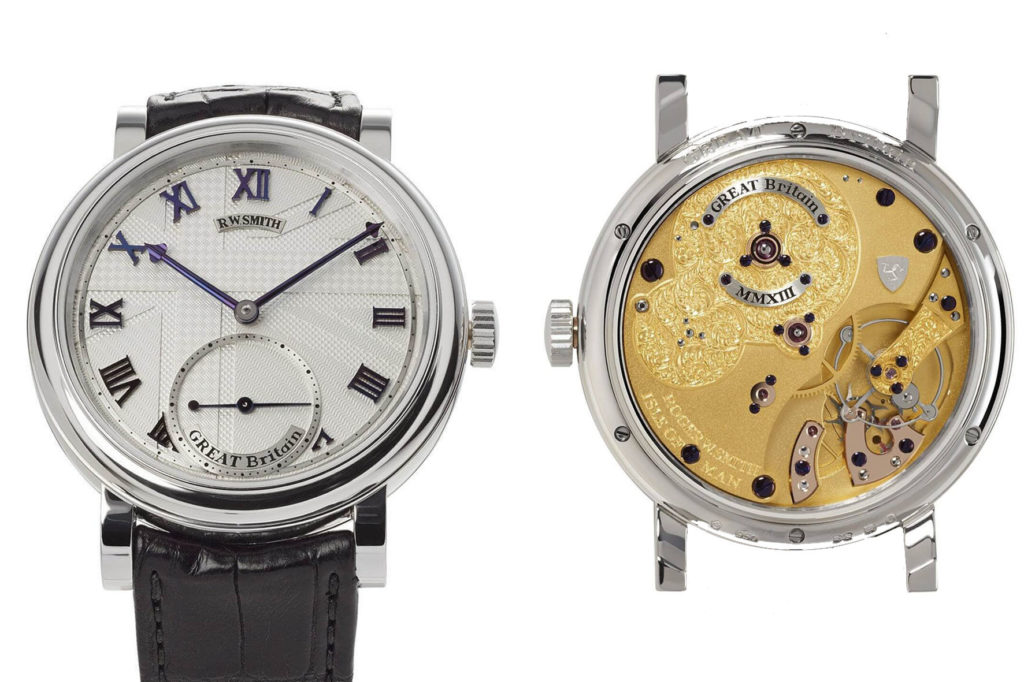
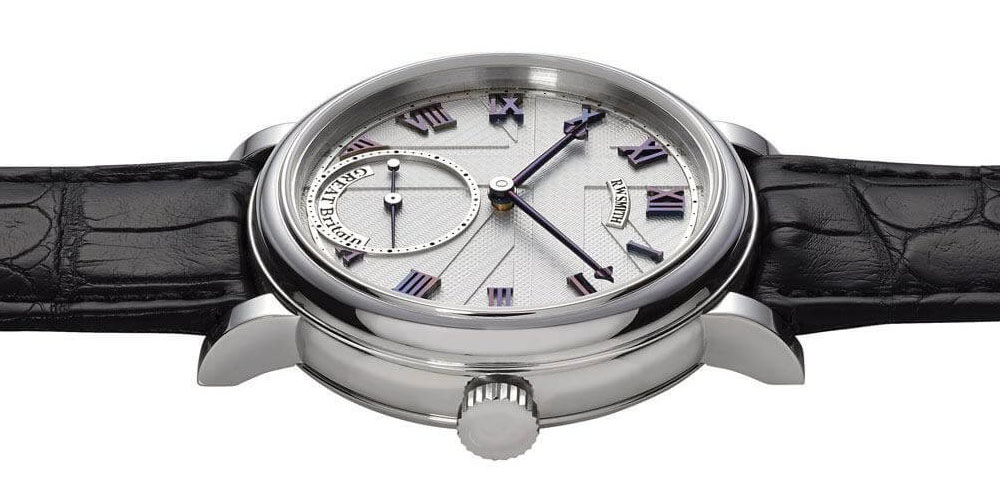
A perfect watch? No, and Roger confirms it again: “If I follow my creed that nothing is perfect then yes, of course, a watch can be beautiful if judged purely on aesthetic merit. My issue is in the intent of the maker, however. If the intent is to create something which is art-on-a-wrist, but fails in its functional imperative to tell the time, then for me it is somehow dishonest. One aspect of George Daniels’s ethos, which I firmly adhere to, is that a watch must be practical and useful. It doesn’t just keep time; it communicates time, and a watch which communicates badly because of its design is a failure in my opinion. I guess, for me, beauty is found in beautiful function.”
ROGER W. SMITH TRIBUTE TO HIS MASTER
And since George Daniels always comes back (“George was unique. There could have been no other,” Roger W. Smith tells us when we ask him which other master he would have liked to have), he could only return in a watch, the Daniels’ Co-Axial Anniversary: a series limited to 35 pieces numbered accordingly to commemorate the 35th Anniversary of Daniels’ invention of the Co-axial escapement.

The Anniversary is a manually wound wristwatch with power reserve indicator, calendar mechanism and seconds dial in a style reminiscent of the famous tourbillon chronograph pocket watch created by George in 1994. In short, the compendium of the idea of timepiece, watchmaking and time for Roger. But do we really know what time is for him? His answer is worth the effort of having read this interview to the end.
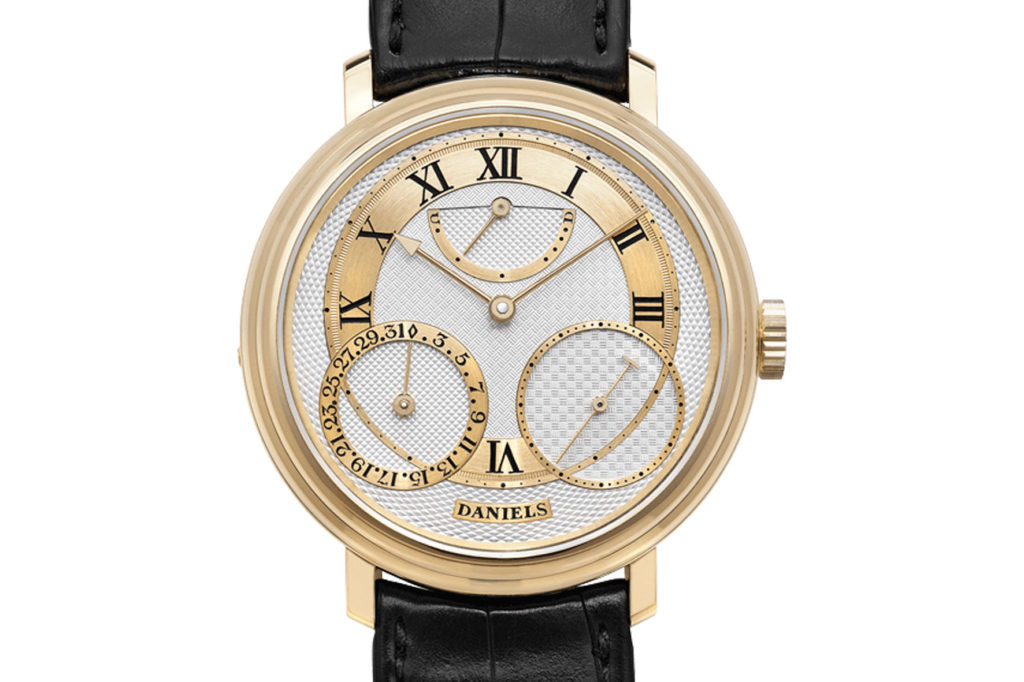
“Well, I suppose we are getting into a deep realm of physics, of reality and perception. Time is change and humanity has tried to observe and then keep time since long before we had watches to keep track of changes in our existence; from equinoxes, to seasons, to days and now, to nano-seconds. So, today, we have a plethora of devices that observe time aside from watches; from phones to washing machines! But what I can say, for certain, is that there’s no better way to observe time than with a beautiful watch.”
By Davide Passoni
Photo Credit Ian Pilbeam
